Opening at The Metropolitan Museum of Art on September 24, 2023, Manet/Degas examines one of the most significant artistic dialogues in the genesis of modern art. Born only two years apart, Édouard Manet (1832–1883) and Edgar Degas (1834–1917) were friends, rivals, and, at times, antagonists whose work shaped the development of modernist painting in France. By examining the ways in which their careers intersected and presenting their work side by side, this exhibition investigates how their artistic objectives and approaches both overlapped and diverged. Through 160 paintings and works on paper, Manet/Degas takes a fresh look at the interactions of these two artists in the context of the family relationships, friendships, intellectual circles, and sociopolitical events that influenced their artistic and professional choices, deepening our understanding of a key moment in the 19th century.
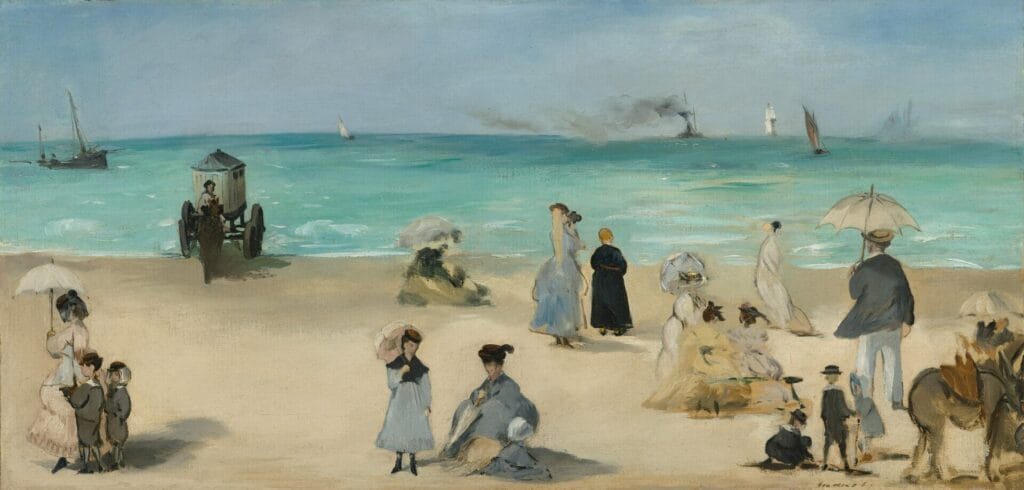
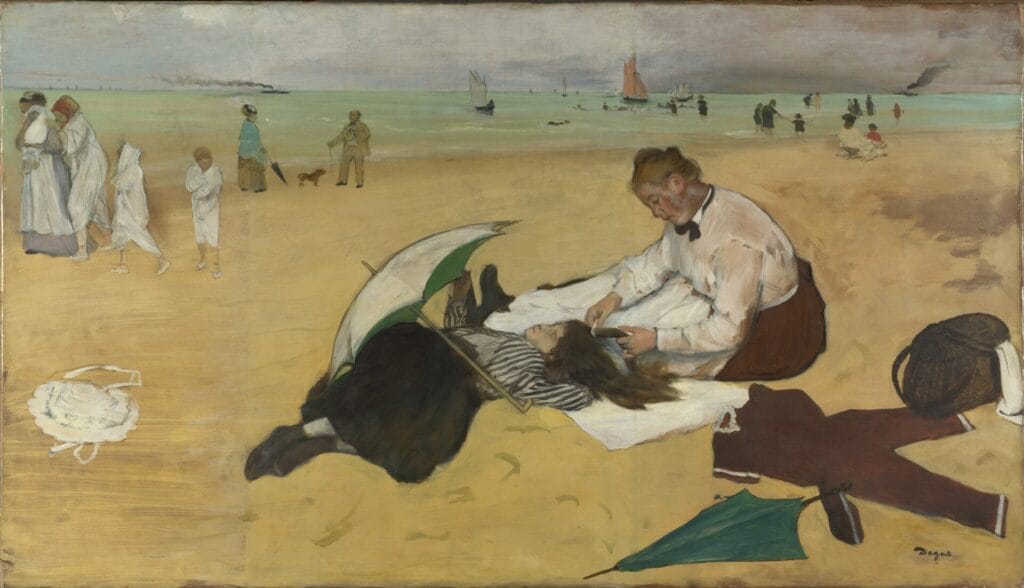
Manet/Degas is organized by The Metropolitan Museum of Art, New York, and the Musées d’Orsay et de l’Orangerie, Paris.
The exhibition is made possible by Alice Cary Brown and W.L. Lyons Brown, the Sherman Fairchild Foundation, and Harry and Linda Fath.
Additional support is provided by the Janice H. Levin Fund, the Gail and Parker Gilbert Fund, The Sam and Janet Salz Trust, and Rosalind and Kenneth Landis.
This exhibition is supported by an indemnity from the Federal Council on the Arts and the Humanities.
“Manet and Degas produced some of the most provocative and admired images in Western art,” said Max Hollein, The Met’s Marina Kellen French Director and CEO. “Anchored by the unparalleled holdings of their work in the collections of The Met and the Musée d’Orsay, in addition to incredible loans from more than 50 other institutions and individual collectors, this exhibition offers a riveting new perspective on the storied pair of artists.”
Highlights among the loans to the exhibition include Manet’s groundbreaking Olympia, which will make its very first trip to the United States, as well as Degas’s recently conserved Family Portrait (The Bellelli Family) from the Musée d’Orsay. Four drawings of Manet by Degas—two from the Musée d’Orsay and two from The Met—will be reunited with rare, related etchings. They will be displayed alongside Degas’s Monsieur and Madame Édouard Manet (Municipal Museum of Kitakyushu), a gift to the sitters that Manet later slashed, thus marking an initial point of rupture in their relationship. Integral pairings of works by the two artists that showcase their treatment of similar subjects from modern life include Degas’s In a Café (The Absinthe Drinker) (Musée d’Orsay) and Manet’s Plum Brandy (National Gallery of Art, Washington, D.C.), as well as Manet’s The Races at Longchamp (Art Institute of Chicago) and Degas’s Racehorses before the Stands (Musée d’Orsay). The exhibition features many works formerly in Degas’s collection, including Manet’s The Execution of Maximilian (The National Gallery, London), which was methodically reassembled by Degas after it had been cut into pieces and dispersed following Manet’s death.
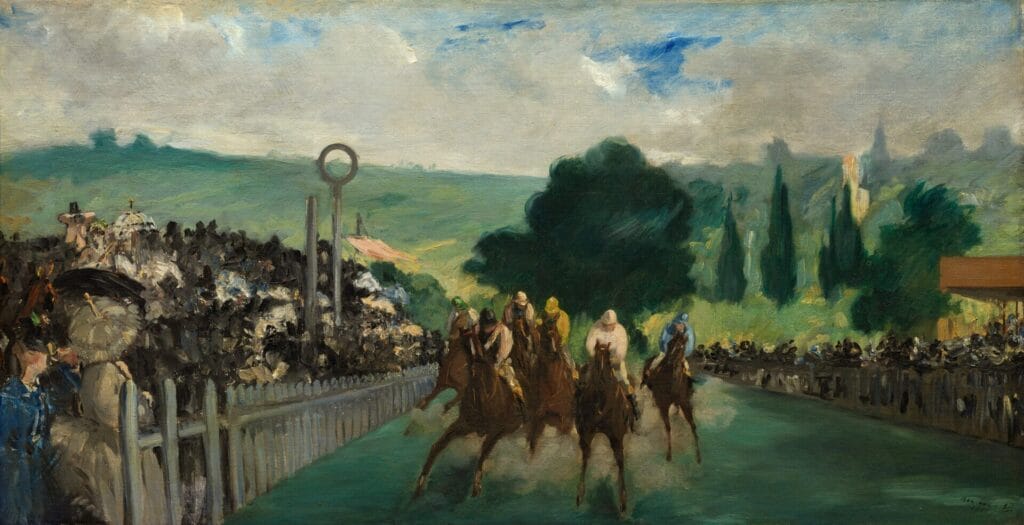

Stephan Wolohojian, exhibition co-curator and the John Pope-Hennessy Curator in Charge of the Department of European Paintings, said, “While little written correspondence between Manet and Degas survives, their artistic output speaks volumes about how these major artists defined themselves with and against each other. This expansive dossier exhibition is a unique chance to assess their fascinating relationship through a dialogue between their work.”
Ashley Dunn, exhibition co-curator and Associate Curator in the Department of Drawings and Prints, added: “Works on paper are integral to their story as the two artists purportedly met in the Louvre, where Degas was working on an etching after a painting attributed to Velázquez, a work that Manet also copied. The exhibition presents an exciting opportunity to evaluate how Manet and Degas worked differently across media.”
Exhibition Overview
Manet/Degas is organized both chronologically and thematically into thirteen sections. It begins with a look at the artists’ formative years of artistic training and copying practices, informed by their mutual respect for the work of great European artists of the past. The two men reportedly met at the Louvre, where Degas was etching in front of a portrait attributed at the time to Velázquez, a work that Manet also copied.
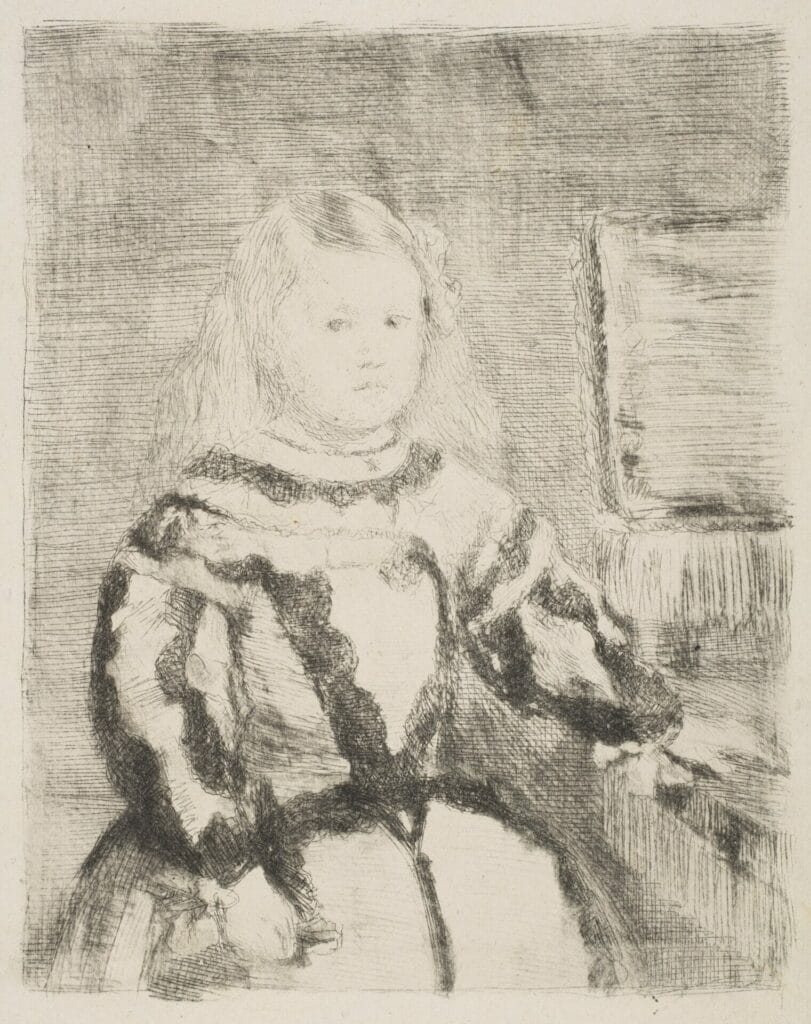
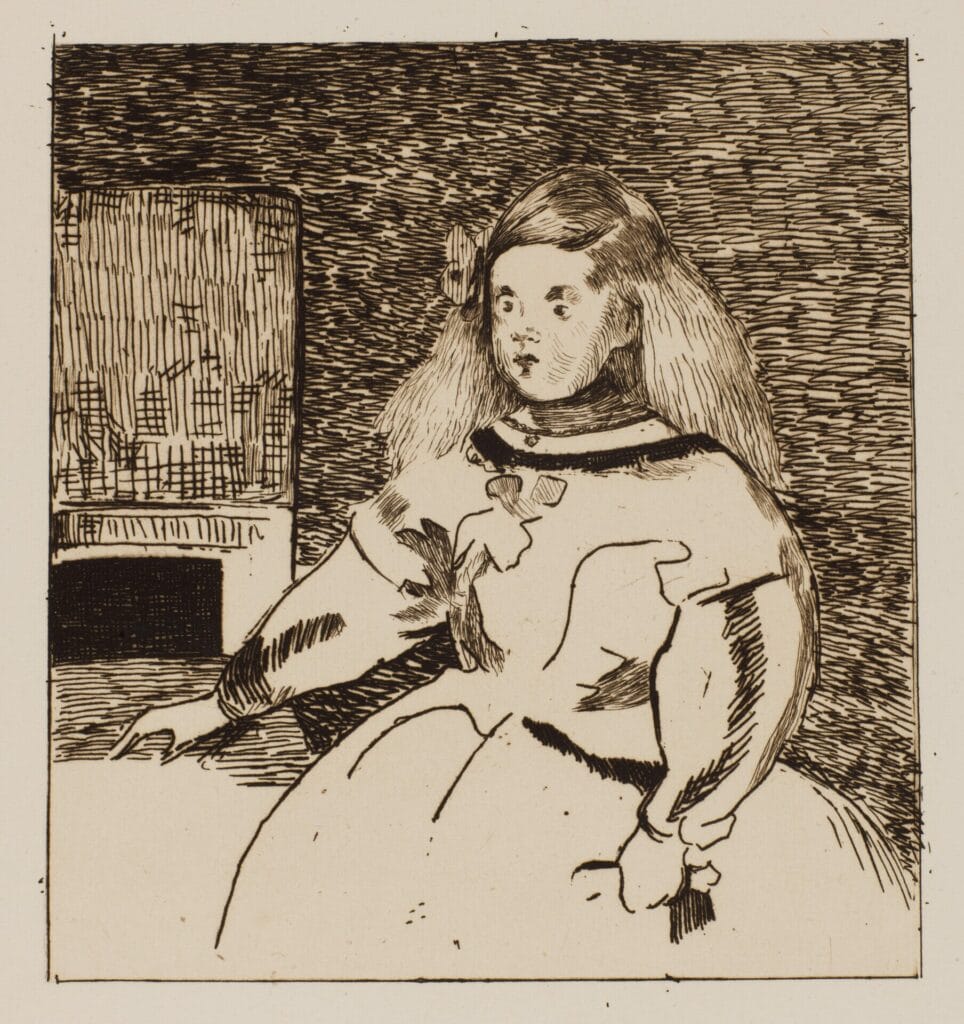
The exhibition addresses the central importance of the annual Salon as a proving ground and public stage for both artists—one that remained vital for Manet, but that Degas ultimately abandoned—and the ways in which each artist grappled with and challenged the prevailing hierarchy of genres. The Salon of 1865 in particular marked a turning point: Manet presented his daring Olympia, while Degas’s debut history painting, Scene of War in the Middle Ages, went unnoticed. However, another work by Degas from that year, A Woman Seated beside a Vase of Flowers, indicated a new direction for the artist.

Portraiture was a major genre for Manet and Degas, and through a rich pictorial dialogue, they expanded its formal conventions and iconographic complexity. Several sections with portraits reveal the animated Parisian environment in which the two artists lived and worked, providing context for the relationships that influenced the two artists—including major literary figures of their day, such as Émile Zola and Edmond Duranty, and the circle centered around the family of painter Berthe Morisot.

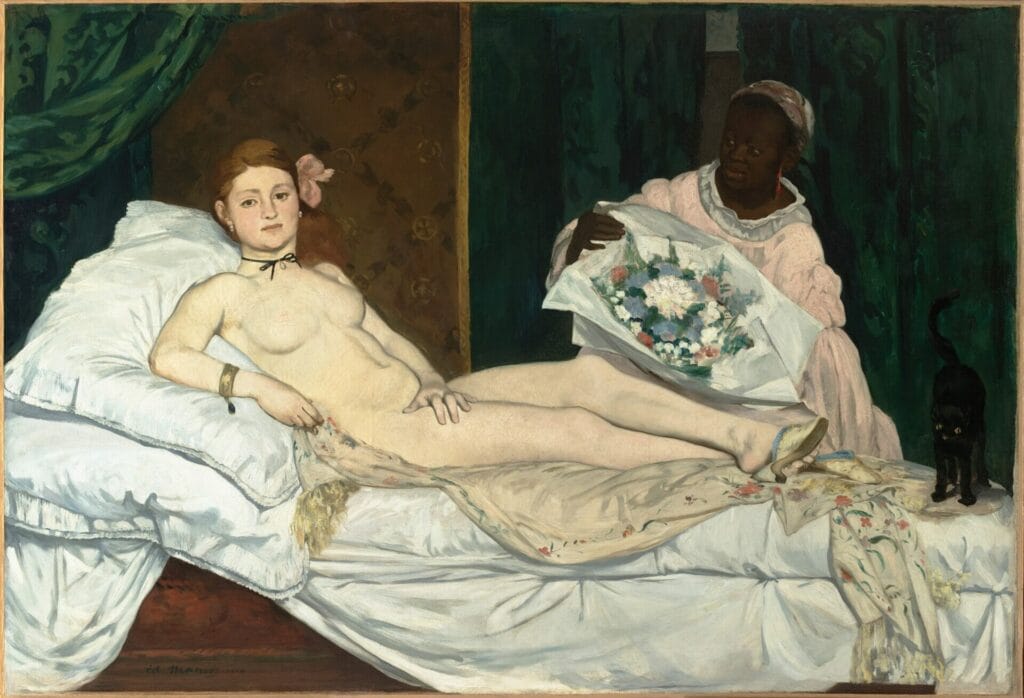
A section dedicated to wartime sheds light on how the artists engaged with the American Civil War and its aftermath, as well as their responses to the Franco-Prussian War, during which they defended Paris as members of the National Guard. Another gallery centers on their relationships with Impressionism. While Degas played a leading role in organizing the independent, nonjuried shows that became known as the Impressionist exhibitions, Manet refused to participate; however, he went further than Degas in exploring the plein-air aesthetic associated with the movement.
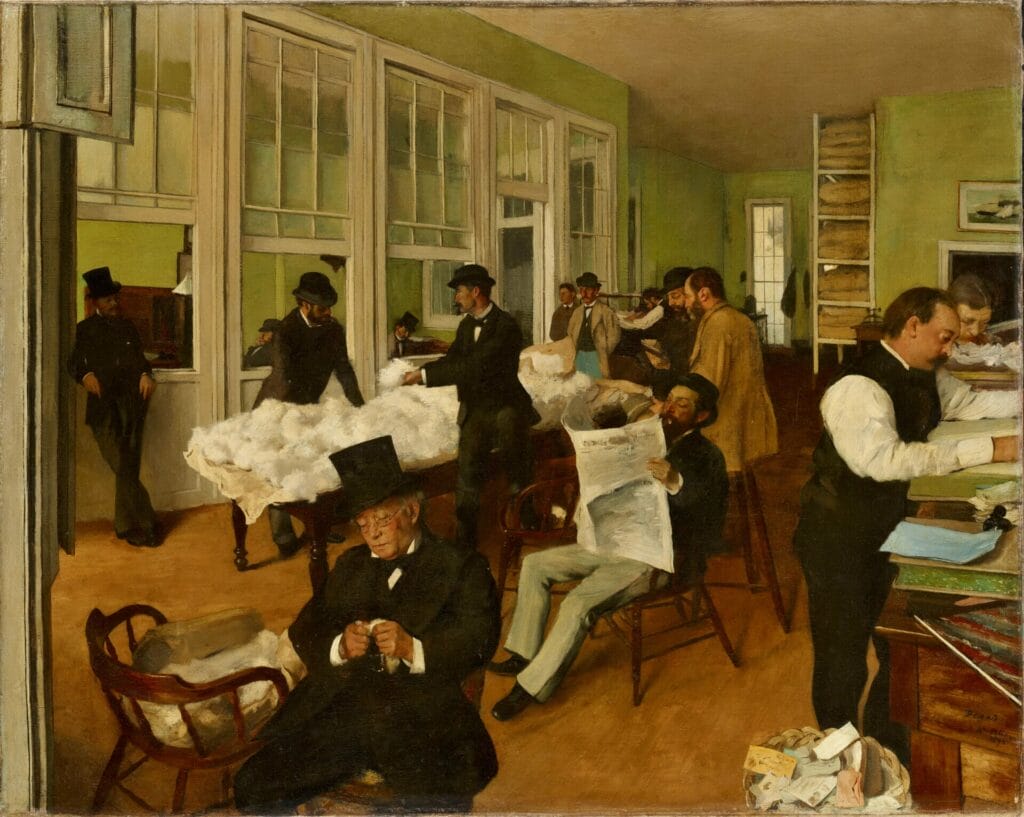
In their search for new subjects, both artists turned to modern Paris, representing scenes of leisure and spectacle at the ballet, theater, and horse races, as well as labor and the alienation of urban life. In works that turn to the private sphere, the artists recast and transgressed the threshold of the picture plane in scenes of the toilette, brothels, and bathers.
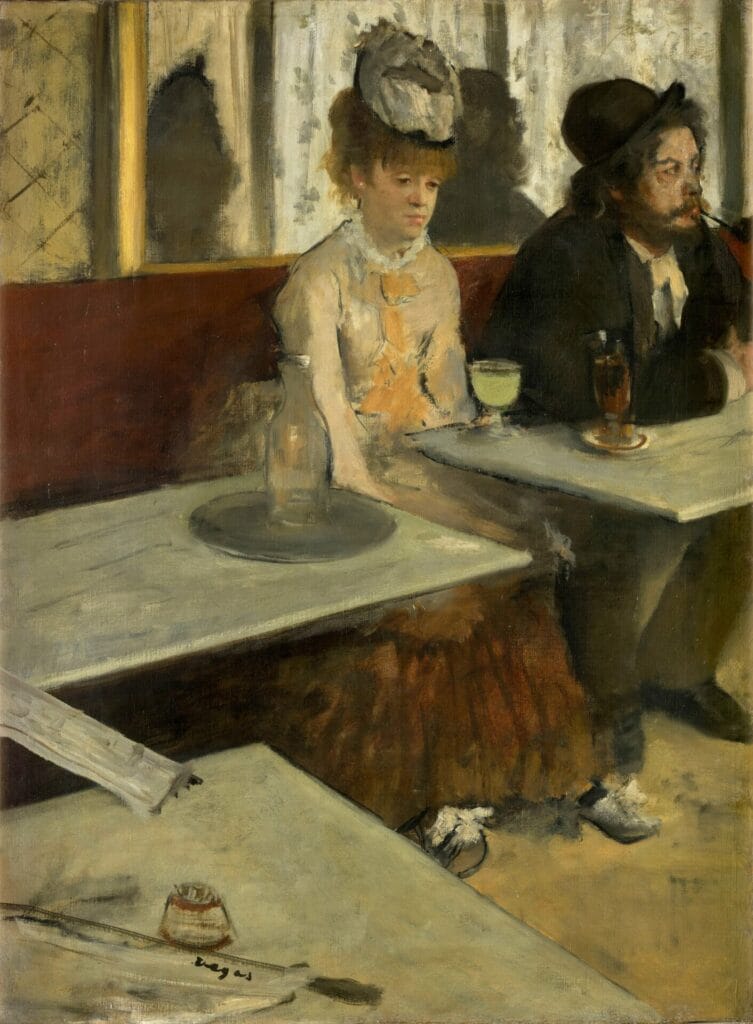
The exhibition concludes by examining how the artists’ relationship extended beyond Manet’s premature death in 1883. By bringing together works by Manet that Degas acquired for his own collection, the section offers a poignant illustration of the two artists’ relationship with each other, both personal and professional.
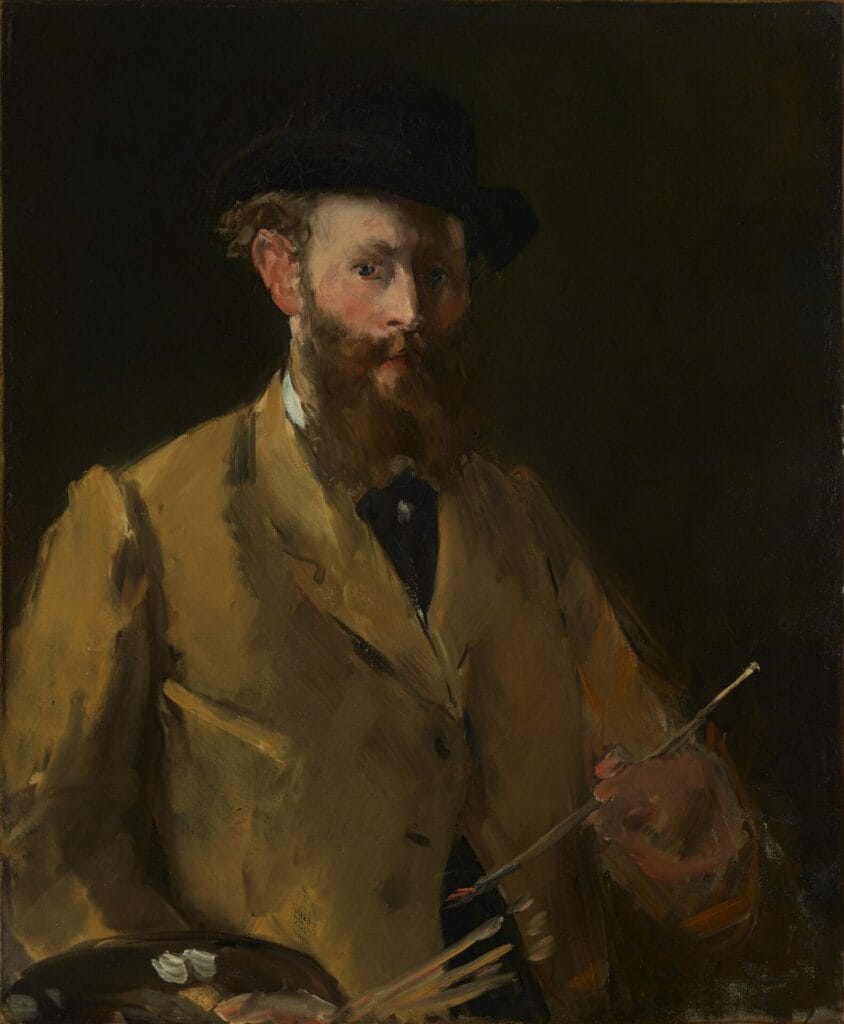

Credits and Related Content
Manet/Degas is co-curated by Stephan Wolohojian (John Pope-Hennessy Curator in Charge of the Department of European Paintings, The Met) and Ashley Dunn (Associate Curator, Department of Drawings and Prints, The Met), in collaboration with Laurence des Cars (President-Director, Musée du Louvre), Isolde Pludermacher (Chief Curator of Painting at the Musée d’Orsay), and Stéphane Guégan (Scientific Advisor to the President of the Musée d’Orsay and the Musée de l’Orangerie).
The Musée d’Orsay presented Manet/Degas from March 28 to July 23, 2023.
A fully illustrated catalogue accompanies the exhibition. Published by The Metropolitan Museum of Art and distributed by Yale University Press, it is available for purchase from The Met Store.
The catalogue is made possible by Gregory Annenberg Weingarten, GRoW @ Annenberg.
Additional support is provided by Anonymous, Robert M. Buxton, Elizabeth Marsteller Gordon, and Claude Wasserstein.
The exhibition is accompanied by an audio feature that explores Manet and Degas’s complicated relationship. Hear how each artist responded to changing aesthetic and political mores, capturing new visions of modern life in the 19th century. The guide offers commentary from contemporary scholars and recitations of firsthand accounts. The content will be accessible online and through a gallery QR code.
The Audio Guide is supported by Bloomberg Philanthropies.
The Met will host a variety of exhibition-related educational and public programs, including a Teen Studio workshop (November 4), a “Sunday at The Met” talk (December 10), and a printmaking workshop for adults led by Robert Blackburn Printmaking Workshop (December 16). More information is available on The Met website.










